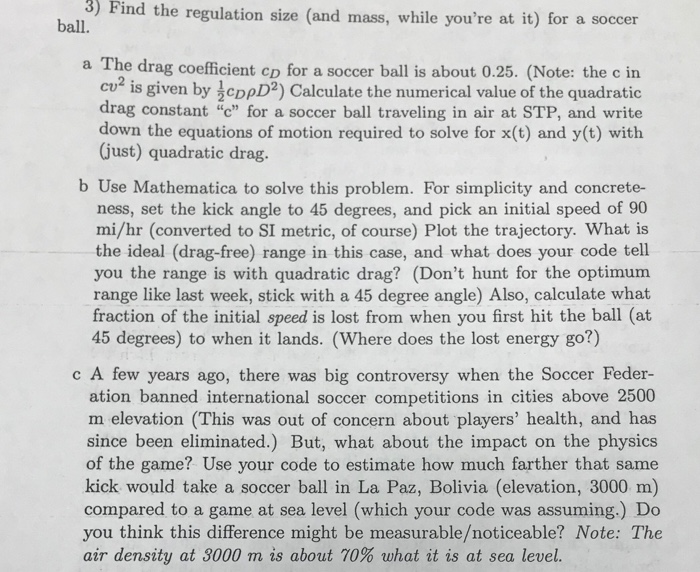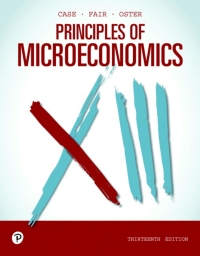Answered step by step
Verified Expert Solution
Question
1 Approved Answer
3) Find the regulation size (and mass, while you're at it) for a soccer ball. a The drag coefficient cp for a soccer ball

3) Find the regulation size (and mass, while you're at it) for a soccer ball. a The drag coefficient cp for a soccer ball is about 0.25. (Note: the c in cu2 is given by cppD2) Calculate the numerical value of the quadratic drag constant "c" for a soccer ball traveling in air at STP, and write down the equations of motion required to solve for x(t) and y(t) with (just) quadratic drag. b Use Mathematica to solve this problem. For simplicity and concrete- ness, set the kick angle to 45 degrees, and pick an initial speed of 90 mi/hr (converted to SI metric, of course) Plot the trajectory. What is the ideal (drag-free) range in this case, and what does your code tell you the range is with quadratic drag? (Don't hunt for the optimum range like last week, stick with a 45 degree angle) Also, calculate what fraction of the initial speed is lost from when you first hit the ball (at 45 degrees) to when it lands. (Where does the lost energy go?) c A few years ago, there was big controversy when the Soccer Feder- ation banned international soccer competitions in cities above 2500 m elevation (This was out of concern about players' health, and has since been eliminated.) But, what about the impact on the physics of the game? Use your code to estimate how much farther that same kick would take a soccer ball in La Paz, Bolivia (elevation, 3000 m) compared to a game at sea level (which your code was assuming.) Do you think this difference might be measurable/noticeable? Note: The air density at 3000 m is about 70% what it is at sea level.
Step by Step Solution
There are 3 Steps involved in it
Step: 1

Get Instant Access to Expert-Tailored Solutions
See step-by-step solutions with expert insights and AI powered tools for academic success
Step: 2

Step: 3

Ace Your Homework with AI
Get the answers you need in no time with our AI-driven, step-by-step assistance
Get Started


